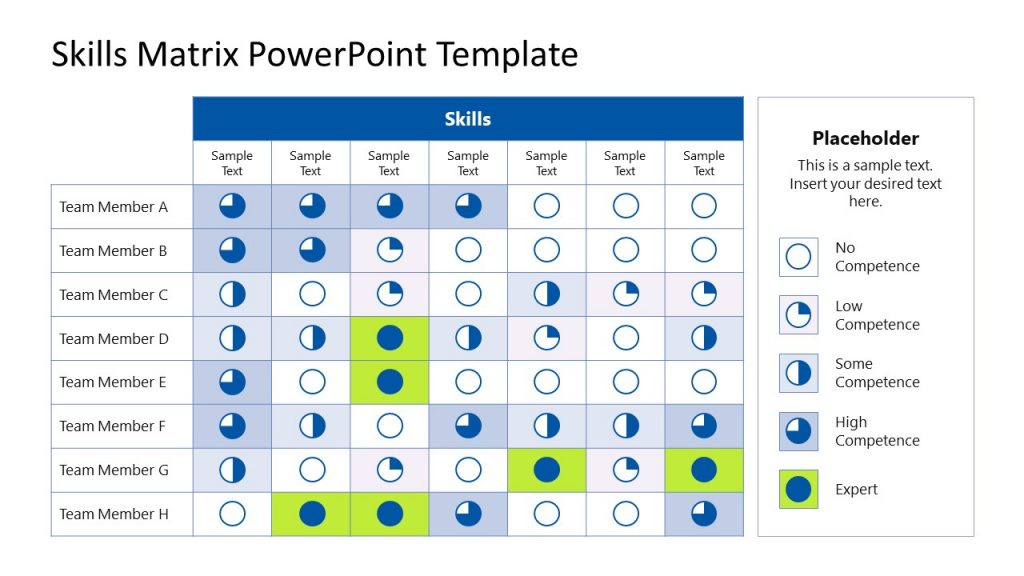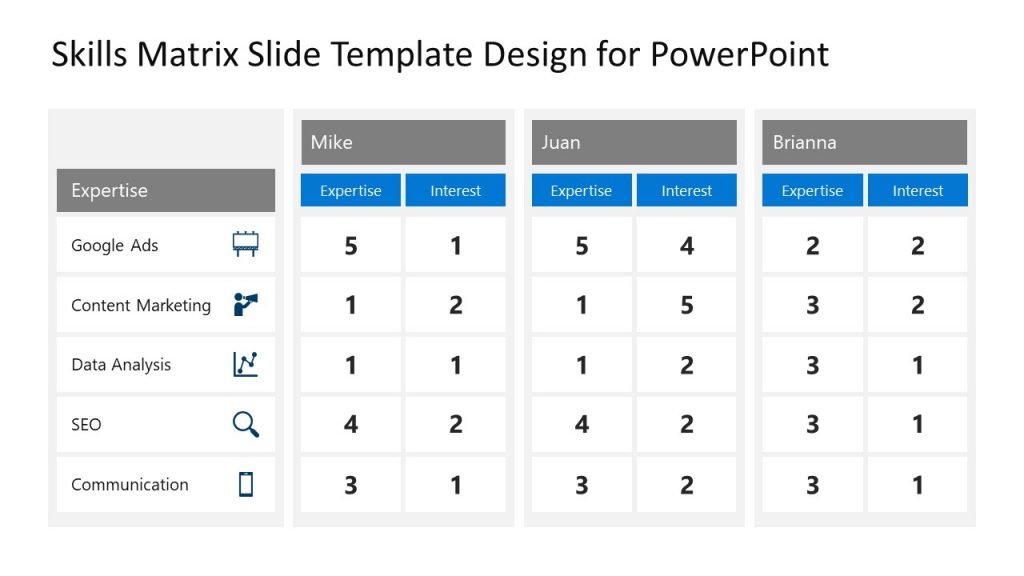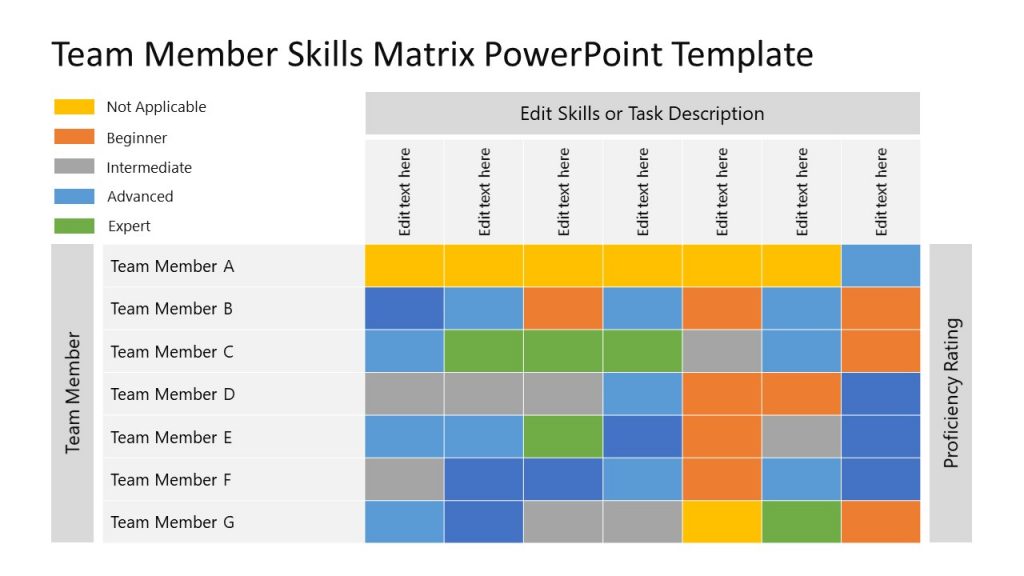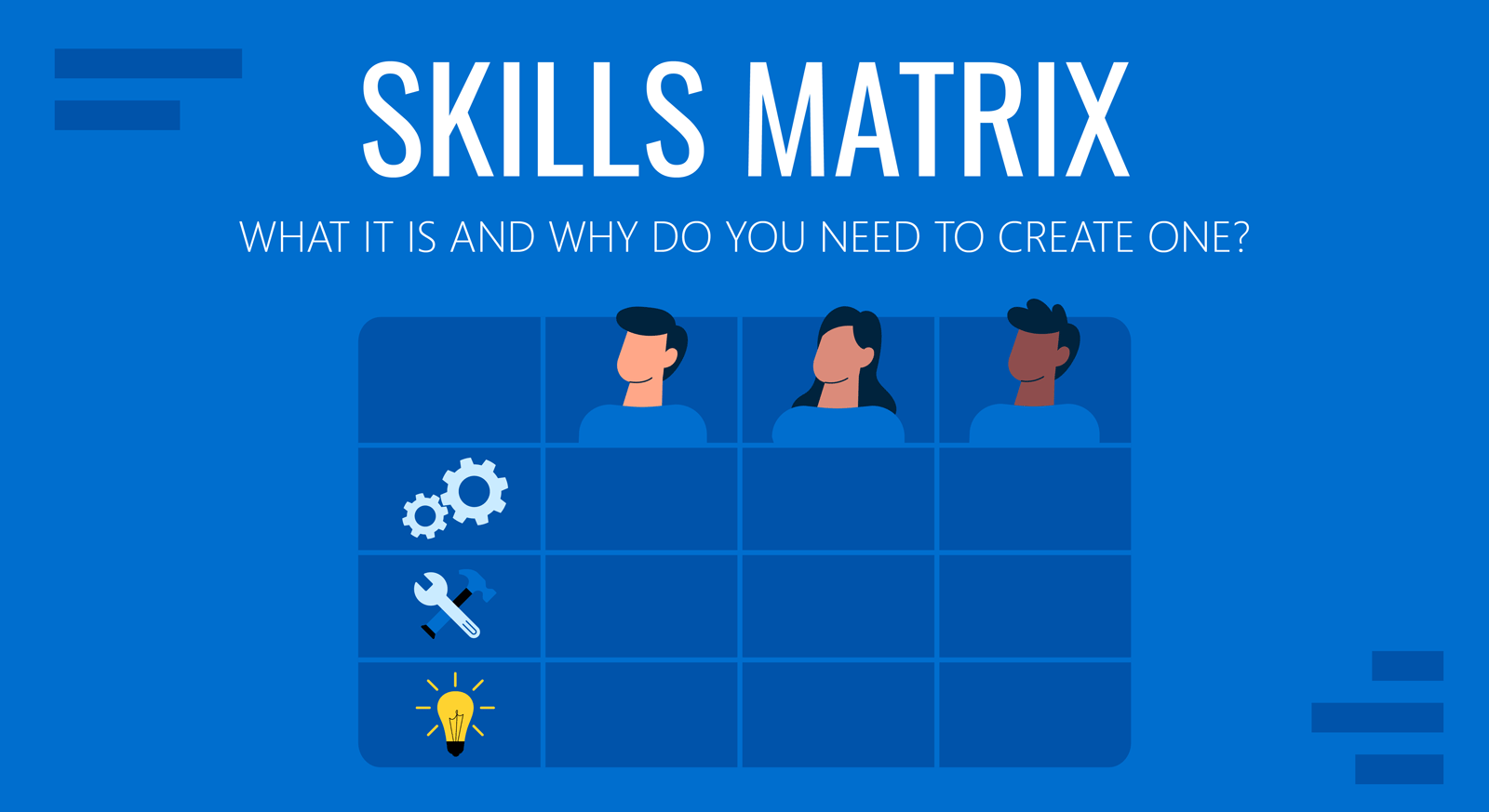
Businesses claim that their people are their most important assets, provided that they possess the latest technical skills. Hence, the demand for skills is increasing constantly, with the workforce moving towards more a flexible, and remote culture, with an expanding global footprint.
The performance of any business relies on the performance of its employees and with a variety of essential skills spread across the workforce, management needs a tool to analyze the skills they require to survive and thrive in today’s competitive market.
For this reason, a popular business analysis tool, the skills matrix, is used to evaluate the job skills required and map the employees who are competent to upskill and contribute to the business.
In this article, we will explain what a skills matrix is, its benefits, and the difference between a skills matrix and a competency evaluation matrix. We also dive into the 4-step process for creating a skills matrix, discuss how to present a skills matrix, and elaborate on the use of a skills matrix with an example.
Lastly, we also share a few skills matrix presentation templates that can be used to map employee proficiencies and interests to make decisions on recruitment, upskilling, reskilling, and succession.
What is a Skills Matrix?
A skills matrix is a visualization tool that business managers use to identify the skills possessed by their workforce, team, or individuals. It maps the required job skills according to the proficiencies of the employees who need them to get the job done.
Also called a capability matrix, a skills matrix is an essential tool for business leaders, HR professionals, and project managers, that is a part of skills management within an organization and helps to understand, utilize, track and develop skills in people by providing insight into their expertise and capabilities.
Besides analyzing employee skill levels, skills matrix can also be used personally and for selecting board members of a company. A board member skills matrix takes into account the essential skills such as integrity, competence, insight, and dedication for working towards the company’s vision and mission. Personal skills matrix are aimed towards self-improvement and are best for self-employed individuals, freelancers, and business owners.
Benefits of Using a Skills Matrix
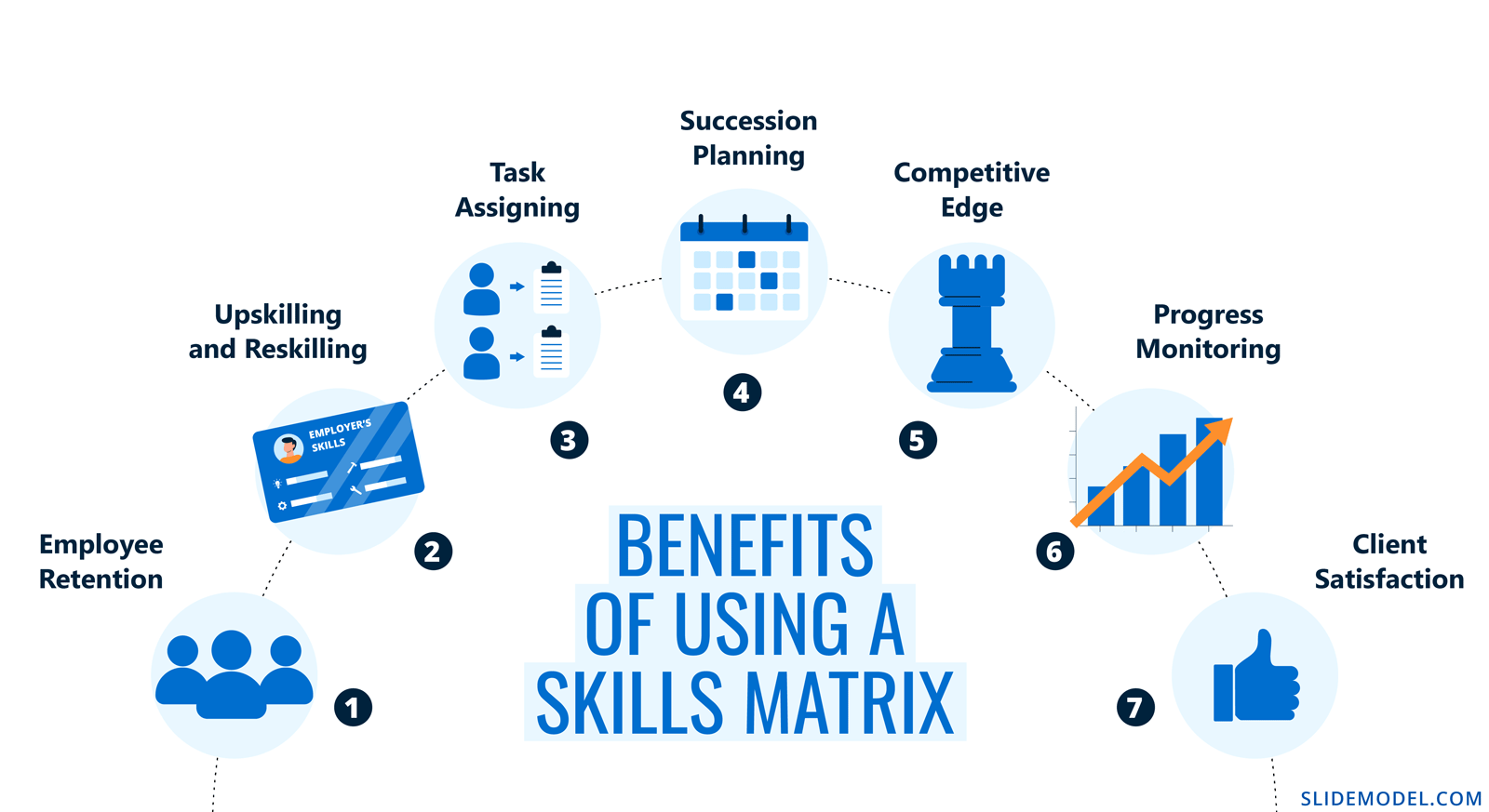
1. Employee Retention
According to a LinkedIn workplace learning report, employees stay with companies longer than provides them enough learning opportunities to stay up to date in their field, offers personalized training based on their career goals and interests, and helps them grow within the company.
The skills matrix offers insight into the skills required by employees to better perform their jobs, or make use of their proficiencies efficiently. This helps develop training and development programs for employees to equip employees with the necessary skills making it an important tool essential for retaining valuable employees.
2. Upskilling and Reskilling
The skills matrix gives an insight into an individual’s and team’s level of expertise in a certain field and helps identify areas of improvement. Managers can use the skills matrix to develop personalized upskilling and reskilling plans and acquire the skills necessary to get the project done.
Besides managers, employees themselves can also benefit from the skills matrix analysis by gaining insight into their exact skill level. They can determine what skill progressions will help them get promoted and help them reach their career goals.
3. Task Assigning
A skills matrix can help assign tasks to employees based on their skills to increase efficiency. Project leaders can list the skills required for each project and assign the right people to the right project based on their skills matrix data.
4. Succession Planning
Skills matrices help identify A-players in every team by providing a bird’s eye view of what each member brings to the table. Using a skills matrix can help you plan proactively to retain valuable employees, and have a backup plan in case any of the core team players leave the organization. It helps managers fill in the skills gap internally to get the project completed on time and reduce the cost of hiring replacements.
5. Competitive Edge
The skills matrix helps companies gain a competitive edge over their competition by effortlessly identifying the necessary skills required to execute any project. HR managers can fill in high-priority positions quickly and attract top-grade professionals by offering career growth opportunities and relevant skills training to help them advance in their careers.
6. Progress Monitoring
Regularly updating a skills matrix is recommended to help managers and business owners monitor their employees’ skill progressions. It offers a clear picture of their skill acquisition progress and the effectiveness of the company’s training and development programs, both on an individual and collective level.
7. Client Satisfaction
Client satisfaction matters, whether internal or external, for any business to succeed and to ensure that clients receive the best service, using a skills matrix is important. It increases awareness of what the team lacks, and the training they require to avoid problems and increase client satisfaction.
What is the difference between a skills matrix and a competency matrix?
Skills are the proficiencies that are developed through training or experience and help complete specific tasks. Whereas, competency is a broader term that combines abilities, knowledge, and skills, and explains how individuals and teams effectively execute their duties and achieve their objectives.
The concept of a skills matrix and a competency matrix is similar. The difference lies in its usage and level, where the competency matrix also includes the knowledge and abilities of employees required to fulfill job responsibilities.
Thus, a skills matrix is a part of the competency matrix which helps management understand the employee’s knowledge, identify gaps, develop training programs, and assign the job duties to the right person. Employees gain visibility of their career progression and figure out areas they need to work on to achieve their career goals.
How to Create a Skills Matrix? A 4-Step Process:

A 4-step process defines how to build a skills matrix for tracking, utilizing, and enhancing employee skills within an organization.
1. List Relevant Skills for the Project
When creating a skills matrix, managers need to list the relevant skills required for the successful completion of the project. Defining the relevant set of skills is the base for a broader skills management strategy that will be applied to the next steps for developing the skillset matrix.
2. Assess Employee Proficiencies
The next step is to assess the employee proficiencies to determine their skill level, identify areas of improvement, and discover lackings. It can be done through interviews and testing, as well as through checking their employee profiles.
3. Assess Employee Interests
After assessing proficiencies, determine employee interests in working on the skills the project requires. Employees need to have an interest in the work they do, to be good at it, and be inclined to be better through training.
An employee can be competent at some skill, but they can lack the interest to continue working, which can create employee dissatisfaction and result in a low employee retention rate. Interest can be
4. Report Using the Skills Matrix
Lastly, when the is data gathered, it needs to be reported on a skills matrix for obtaining insights. The skills matrix visualizes the skills employee already possess, the skills that need to be acquired, and the skills that need further improvement based on their proficiencies and interests.
How to Present a Skills Matrix?
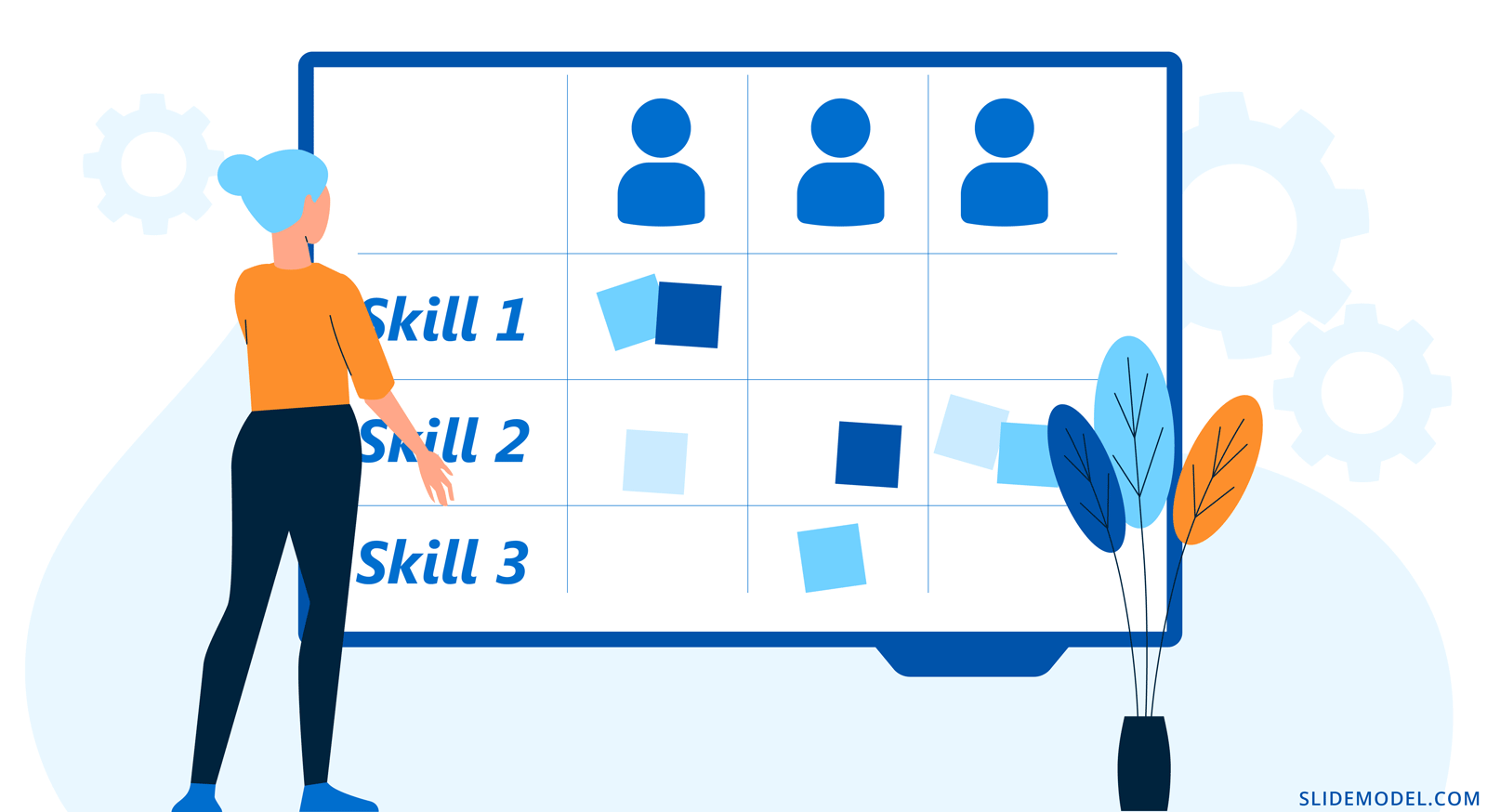
1. Manually Using a Whiteboard
A skills matrix can be presented manually on a whiteboard, be it a physical whiteboard or a virtual whiteboard. Managers can write down employee names or use sticky notes to arrange employee skills data and report the results. However, this method can only be used for small businesses.
2. Using an Excel/Google Spreadsheet
An Excel spreadsheet or Google Sheets spreadsheet can also be used to present a skills matrix. This method can be used for managing the skills of a to medium-sized teams.
3. By Creating a PowerPoint Presentation
PowerPoint presentations, as well as Google Slides, help present a skills matrix and analyze it in an effective manner by offering an appealing data set for managers to work on. Presentations can be made easily and the data can be presented using appealing elements, colors, charts, and graphs for the purpose of skills management of a team, or department.
4. Using SlideModel’s Editable Presentation Templates
We recommend using our professionally designed and 100% editable templates for creating a skills matrix presentation to present the data to HR senior professionals, project leaders, and top-level management. These are especially useful for project managers to gain approval for funding their team’s training and development, and recruitment of new team members for the completion of projects. A collection of editable matrix templates can be used to leverage your skills matrix presentations.
5. With a Talent Management Software
Talent management software uses technology and is ready for human resource management professionals. A Talent Management System is deployed for skill management in larger companies and helps visualize results on an organizational level. It is an expensive method for HR professionals that need to monitor the progress of all the employees in an organization, develop potential career paths, discover upskilling and reskilling opportunities and identify potential candidates for succession planning.
Skills Matrix Example
A digital marketing agency needs to identify the right employees for a new project. The core skills are listed before analyzing employee proficiency and interest, to determine the right fit for each task.
Below is an example of the skills matrix, with the numbers representing the expertise level and interest of each member. Interest is represented with the number 1 and 2, with 1 indicating interest, and 2 showing that the employee is not interested.
For assessing expertise numbers 1 to 5 are used, with 1 being the lowest skill level, and 5 indicating that the employee has sufficient knowledge and experience in the field to execute the task flawlessly.
Skills Matrix Templates for Presentations
Conclusion
A skills matrix has undeniable benefits for business owners, managers, and HR professionals. It helps them keep track of their talent pool’s skills by offering a clear vision of employee skill levels, their progressions, and what skills they need to acquire to perform better.
The matrix facilitates task allocation, and employee retention and helps in succession planning. Managers also use the skills matrix to employ the right training and development plans to ensure a direct influence on their employee’s performance. It also helps maintain sustainable working conditions and improve employee satisfaction by offering the right learning and career growth opportunities.
